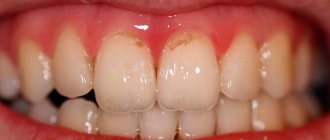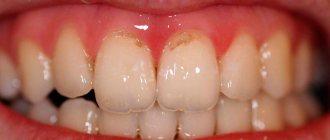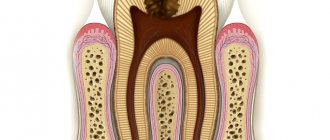Both adults and children are susceptible to fungal and infectious diseases. One of the most common ailments that mainly affects the female body is candidiasis (thrush). This disease is so common that it is diagnosed in almost every adult woman. Infantile thrush is no less common.
The nature of the disease and its causative agent are the same in both adults and children. The candida fungus (Candida albicans), which causes thrush, is constantly present in the human body (on the mucous membranes, genitals and occasionally internal organs), being part of the microflora, without causing harm and without showing any symptoms. Therefore, the disease is provoked not so much by the fungus itself, but by the state of the body and external factors that contribute to the growth of the fungus and the development of infection.
Children's vulvovaginal candidiasis most often affects adolescents (mainly girls) and newborns of both sexes.
There are two forms of the disease:
- a form with pronounced symptoms according to the standard clinical picture;
- asymptomatic form, which is detected only as a result of laboratory tests.
There are also such types of thrush in children (vulvar candidiasis in girls), as oral candidiasis (develops in the mouth of newborns) and genital candidiasis (mainly in preschoolers and adolescents). In any case, the child must be shown to a specialist, since the infection indicates a decrease in immunity, which can lead to even more complex and unpleasant consequences.
Causes of candidiasis
Thrush in children is caused by yeast-like fungi of the genus Candida, class Fungi Imperfecti. They belong to opportunistic microorganisms, that is, they can provoke disease only if they are directly in the child’s body in sufficient quantities and under favorable conditions. These mushrooms can retain their properties in a dried state for three years, easily tolerate freezing, but when boiled and under the influence of disinfectants they die instantly.
Yeast infection most often occurs in newborns of both sexes, as well as in teenage girls. The main reason infants become infected with candidiasis is infection from a sick mother during the birth process. When a child passes through the birth canal, Candida yeast-like fungi settle on his skin and mucous membranes. In addition, infection can occur while bathing after an infected family member. In teenagers, thrush usually develops due to hormonal changes.
There are a number of factors contributing to the formation of candidiasis in children:
- period of teething;
- long-term and unsystematic use of antibiotics;
- weakened immunity;
- frequent colds;
- endocrine pathology in children (diabetes mellitus, obesity, bronchial asthma);
- diseases of the digestive tract;
- prematurity;
- dry and hot climate in the room where the child is;
- unfavorable sanitary and hygienic conditions.
Causes of vulvitis in girls
The high incidence of inflammation of the mucous membranes of the genital organs in girls is associated primarily with the physiological characteristics of newborns and children of a younger age group. At birth, the reproductive tract and membranes of the genital organs are sterile. Only after a week, opportunistic microorganisms master this nutrient medium, forming a prototype of normal female microflora. However, unlike the genitals of an adult woman, the child’s vagina does not have a sufficient number of microorganisms, which explains the inferiority of the protective reaction. The fact is that it is the vaginal microflora that provides the acidic environment of the genital membranes. A high level of acidic components causes the death of dangerous pathogenic flora, effectively protecting a woman from infectious and viral pathogens.
Thus, initially the girl’s genitals are defenseless against aggressive bacterial factors. Only by adolescence, the pH environment of the mucous membranes transforms from neutral (pH 7.0) to moderately acidic (pH 4.0-4.5).
The second important provoking factor of childhood vulvitis in girls is the imperfection of the child’s immune system, namely the deficiency of immunoglobulins, phagocytes and components of the compliment system. It is important to monitor the state of the child’s immunity, because hypovitaminosis, taking antibacterial drugs and the presence of endocrine disorders in the girl, such as diabetes, are considered risk factors that increase the likelihood of developing inflammation.
The immediate cause of vulvitis in a child is infection. The following bacterial pathogens are considered the most dangerous in this regard:
- Nonspecific infections . This group of pathogens is also called opportunistic pathogens, since they normally live on the patient’s mucous membranes and are part of the healthy, complete microflora of the genital organs. This group includes all opportunistic aerobic and anaerobic flora and yeast fungi. To activate them, favorable conditions are necessary, in the form of weakened immunity. The situation is aggravated by failure to maintain personal hygiene, ignorance of the correct washing technique, wearing synthetic underwear, injury to the genitals, etc.
- Specific infections . This includes pathogens that are not normally present in the microflora of the vagina and external genitalia of a child - chlamydia, ureaplasma, gonorrhea, herpes virus, gonococci, mycobacterium tuberculosis, etc. Infection of children most often occurs through household means due to poor hygiene and the entry of strangers objects in the vagina (insects, toys, sand, etc.). In adolescents, infection can be caused by sexual relations and masturbation. Vulvitis in newborn girls can occur due to infection during contact with the contaminated birth canal of the mother.
- Fungal pathogens . Mycotic vulvitis develops as a response to the death of microflora in response to antibiotics and hypovitaminosis. This form of vulvitis in infants can be a consequence of diaper dermatitis.
- Helminthic infestations . Pinworms and other helminths usually affect children who have frequent contact with animals. This cause is often classified as a nonspecific form of pathology.
- Allergy . A rare form of the disease is atopic or allergic vulvitis, which manifests itself as a hypersensitivity reaction to an allergen. Both food products (citrus fruits, sweets, nuts, etc.) and local hygiene products (soap, balms contained in diapers, sanitary pads) can act as an irritant.
- Anatomical disorders of the structure of the genital organs . If a child has developmental abnormalities of the external genitalia, the risk of inflammation increases sharply. This is especially true in cases where the girl has incorrect localization of the external urethral opening, a gaping genital fissure, the external labia are too open, and the mucous membrane is excessively thinned.
Types of candidiasis
In children, the following main types of thrush are distinguished:
- candidiasis of the skin and its appendages;
- candidiasis of the mucous membranes (oral cavity, corners of the mouth, tongue, pharynx, larynx, trachea, gastrointestinal tract, genitals, urethra);
- visceral or systemic candidiasis (yeast endocarditis, meningitis, sepsis, etc.).
Depending on the duration of the inflammatory process and the manifestations of the disease, acute and chronic forms of thrush are distinguished. Depending on the extent of the lesions, candidiasis can be focal or generalized. Based on the depth of spread, thrush is divided into visceral and superficial (smooth skin, mucous membranes, and nails are affected).
A separate type of disease includes secondary allergic rashes that appear as a result of additional sensitization of the skin to the proteolytic enzymes of the fungal pathogen.
Candidiasis of the skin outside the folds (smooth skin)
Candidiasis of the skin of the body develops, as a rule, secondarily, when the process spreads from the folds, mucous membranes or affected nails and periungual ridges, and is characterized by a wide variety of clinical manifestations.
Candidiasis of smooth skin
In the typical variant, the disease is characterized by the appearance of small blisters and pustules with a flaccid lining, which are highly resistant.
With atypical variants, for example with HIV infection (photo below), the manifestations of candidiasis can be completely unusual.
Facial candidiasis
Symptoms of candidiasis
The clinical symptoms of candidiasis vary due to the different localization of the inflammatory process in the body.
Oral thrush in children is characterized by:
- A whitish, cheesy coating in the mouth that is easily removed with a finger or a spatula. It is localized mainly on the mucous membrane of the cheeks, tongue, tonsils, hard and soft palate, red border of the lips. At first, candidal plaque is present in the form of small white dots, reminiscent of semolina, then merges into larger plaques with the characteristic appearance of “curd residue” or milky films in the mouth. In the absence of proper treatment and when the process becomes chronic, plaque transforms into a dense yellow film, which is difficult to separate from the mucous membranes with the formation of bleeding erosions.
- Hyperemia of the mucous membrane (overflow of blood vessels), erosion.
- Pain and burning in the mouth.
- Seizures, maceration of the skin in the corners of the mouth.
- Child's moodiness, loss of appetite up to complete refusal to eat.
Genital candidiasis is characterized by the following symptoms:
- Redness and swelling of the genitals, severe itching.
- A cheesy, thick discharge from the genitals with an unpleasant sour odor.
- Pain during urination.
- White milky films on the skin of the external genitalia, in the chronic process - congestive hyperemia, tissue thickening.
Candidiasis of the esophagus , stomach and intestines is characterized by the presence of the following symptoms:
- Colic and flatulence, frequent regurgitation.
- Pain when swallowing.
- Pain in the stomach and intestines.
- Decreased appetite, refusal to eat.
- Unshaped stool with an admixture of white inclusions, reminiscent of curd mass.
Skin candidiasis is characterized by the formation of a rash in the form of papules or vesicles, which eventually open and form weeping erosions with a white coating. In infants, the elements of the rash are most often localized in the area of large folds on the abdomen. In older children, yeast infections usually appear between the fingers.
Causes of thrush in a child
Because the child’s immunity is still too weak and this contributes to the development of favorable conditions for the development of candidiasis (candida fungi are the first of the microscopic fungi that a child encounters at birth).
In the first week of life, so-called thrush (damage to the mucous membranes of the oral cavity) may develop in the form of a cheesy white coating on the inner surface of the neck, tongue and gums. Basically, this process is temporary and goes away during the first month of life, and with a weakened immune system, thrush can be recurrent and difficult to treat. In addition, if the skin is damaged, the process can spread to natural folds and in the area of diaper rash. Healthy skin can resist the effects of fungi on its own, but damaged skin cannot do this, and a fungal infection can become more severe. Breastfeeding plays an important role because breast milk helps repopulate the sterile intestines with beneficial microorganisms. Therefore, the body of bottle-fed children is more susceptible to infection entering the body.
The process of fungal development is aggravated by wearing diapers, which create a “greenhouse effect” and due to the warm, humid environment, fungal infections multiply quickly. A healthy breastfed baby cannot develop candidiasis. If thrush appears again after treatment, this should be assessed as a signal that the immune system is weakened. In children, candidiasis can either be temporary or become a serious disease requiring treatment from a specialist.
Recurring oral thrush in infants can cause damage to the fingernails. This occurs in infants who prefer their finger to the pacifier. As a result of the lesion, the nail plate becomes deformed, thickens, the periungual fold turns red and a white mass is released from under it.
In girls, candidiasis can develop into candidal vulvitis, and in boys, balanoposthitis can occur (redness and a white cheesy coating appear in the area of the urethral opening). These phenomena may not bother the child, but are sometimes accompanied by itching, burning and pain.
In older children, Candida fungi can cause allergic diseases, which, in turn, affect the skin, mucous membranes and intestines. Therefore, children with allergic diseases should undergo a comprehensive examination, including for possible candidiasis.
Diagnosis of candidiasis
The first step in diagnosing thrush is an examination by a pediatrician. If the doctor detects signs of fungal infection (white cheesy coating on inflamed mucous membranes, the appearance of eroded surfaces after removing the milk film), a set of additional laboratory and instrumental studies is prescribed to confirm the diagnosis of candidiasis and determine the cause of its appearance:
- General blood and urine analysis.
- Blood chemistry.
- Microbiological examination of stool.
- Serological study.
- Microscopy of a scraping or smear from the affected organ to determine the presence of Candida fungus.
- Cultural culture of blood, urine, feces, biopsy of the mucous membrane.
- Ultrasound examination of the abdominal and pelvic organs.
- Endoscopy of the digestive organs.
Treatment methods for candidiasis
Therapy for yeast infections in children involves an integrated approach to treatment. Pediatricians are faced with the task of not only destroying the fungus that causes lesions, but also eliminating pathogenetic mechanisms, restoring normal microflora and increasing immunological reactivity.
When choosing tactics for drug treatment of thrush in children, they try to refrain from prescribing antibiotics. Affected mucous membranes and skin are usually treated with antifungal creams, ointments and solutions. For the visceral form of candidiasis, systemic antifungal drugs are used.
During treatment, the patient needs a healthy diet, in which proteins predominate and carbohydrates are limited. In addition, as prescribed by your doctor, you need to take vitamins, anti-dysbacteriosis medications and immunostimulating drugs.
Since children’s immunity is still quite weak, it is necessary to take a responsible approach to the prevention of thrush and follow simple rules:
- regularly sterilize all pacifiers and pacifiers given to the child;
- bathe in clean water in an individual bath;
- carefully care for the skin and mucous membranes;
- observe the correct diet, monitor the state of the child’s gastrointestinal tract;
- completely cure candidal colpitis and vulvitis before or during pregnancy, so as not to infect the child during childbirth.
Fisenko Karina Olegovna
Specialty: Adult gynecologist, gynecologist-endocrinologist Work experience: more than 25 years Cost of appointment: 1600 rubles Cost of online appointment: 1200 rubles
Make an appointment
- Clinical picture of the disease
- The main causes of inflammation of the external genitalia and vagina in children
- Types of vulvovaginitis in girls
- Diagnosis of the disease
- Treatment of the disease
Consequences of candidiasis
If a timely diagnosis is made and rational treatment is prescribed, thrush in children is completely cured and leaves no consequences. With improper therapy and late seeking medical help, the disease can become chronic and become resistant to further treatment measures. In addition, against the background of a chronic yeast infection, candidosepsis can develop, a dangerous disease that can be fatal. Intestinal candidiasis is fraught with complications such as heavy bleeding, perforation of the intestinal wall, and ulcers.
In gynecology, vulvitis is an inflammation of the mucous membranes of a woman’s external genitalia.
The inflammatory process covers the labia, clitoris, external urethral opening, anal area and surrounding tissues (pubis, inner thighs, etc.). At first glance, such a pathology should bypass children of the younger age group and affect only adult women of reproductive age. However, statistics show that acute vulvitis in girls of childhood and adolescence is the most common reason for visiting a pediatric gynecologist. In some cases, doctors even diagnose vulvitis in newborn girls.
To notice and provide medical assistance in time for the development of vulvitis is the most important task of responsible parents . Advanced acute vulvitis in a child can involve the vaginal mucous membranes in the inflammatory process, which leads to aggravation of the little patient’s condition and provokes the development of vulvovaginitis. In addition, the acute process gradually turns into a chronic form, which inevitably affects the sexual, reproductive and menstrual function of an adult representative of the fair sex. This inflammation is dangerous due to the formation of synechiae (adhesions) of the labia minora, erosion of the cervix and uterine body, as well as the addition of cystitis and urethritis.











